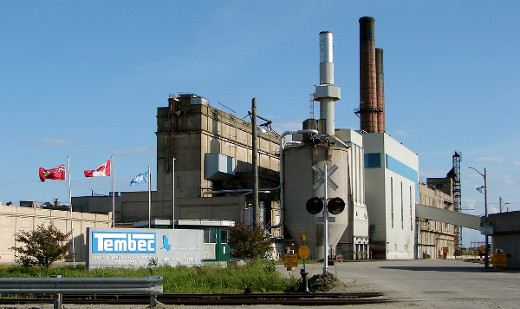
A 30-year Odyssey: Curbing water pollution in the pulp and paper industry
In 1850, the first Canadian pulp and paper mill began operating in the Don Valley of Toronto. A little over a century later, there were more than a 140 pulp and paper mills situated along the great rivers of the North – including 31 in Ontario – providing tens of thousands of jobs, driving exports and underpinning the national economy. For a time, nearly every sheet of every newspaper printed around the world was made from pulp processed in Canadian mills. But along with the considerable economic benefits they conferred, those mills were also contributing huge loadings of air and water pollutants to the environment.
Three former managers with the Ontario Ministry of Environment – Jim Drummond, Nels Conroy and Dennis Draper – share their experiences in the field, in the lab and in the courts while they worked to reduce wastewater discharges from pulp and paper mills across Ontario. Environmental Commissioner Gord Miller also contributes some stories of his early years as a district officer with MOE in Northern Ontario.
Pollution was killing the great rivers of Northern Ontario
Pulp and paper mills had a huge impact on the rivers that received their wastes. For up to 40 miles downriver from a mill, there were no fish, nobody boated or swam, and nobody drank the water. Mats of bark and wood chips covered the entire river bed for miles, destroying aquatic habitat and smothering spawning grounds, while brown foam floated on the surface. Extremely toxic contaminants built up in the sediments and bioaccumulated in any aquatic species that survived. Foul smelling pollutants and smoke billowed into the sky; some called it “the smell of prosperity.”The first pollution control objectives are proposed
For much of the 20th Century, governments ignored or excused the environmental excesses of the industry. The first wastewater quality objectives for the province’s pulp and paper mills were contained in a non-enforceable directive setting targets for improved water quality that was issued in 1965. All of these targets were to have been met by the end of 1969. None were. By 1975, as a result of a series of voluntary abatement programs, about half of Ontario's mills had managed to cut their gross discharges of wastewater and a handful had achieved the 1965 objectives. However, others had actually increased the amount of waste they were dumping into Ontario waters. In 1970, the federal government amended their Fisheries Act so they could issue pollution control regulations for various industrial sectors. The following year, the Pulp and Paper Effluent Regulations were passed, which set some limits on the bark, wood fibres and other organic material being dumped, and prohibited the release of effluents that were killing fish. However, the standards applied only to new, expanded and/or altered mills. For existing mills, the federal limits served as non-enforceable guidelines. Only an estimated ten percent of mills were forced to comply with the federal limits, minimizing their environmental impact. Other regulations made under the Fisheries Act limited the mercury in liquid effluents and included sampling and reporting requirements, while separate regulations under the Clean Air Act to control air-borne emissions were put in place in 1978.
Mercury pollution in the English-Wabigoon river systemBy the late 1960s, the first concerns about mercury poisoning were being raised on the White Dog and Grassy Narrows reserves in Northwestern Ontario. Since 1962, up to 20 pounds a day of mercury had been dumped into the English-Wabigoon river system from a chlor-alkali plant operated by Reed Paper Limited (formerly the Dryden Chemical Company) to produce the chlorine used in bleaching pulp. While the province ordered the company to stop discharging mercury in March 1970 – and all commercial (but not sport) fishing in the river was banned – mercury releases persisted under various extensions granted to the company. Airborne emissions also continued until the company stopped using its mercury-based process in October 1975. By that time, the sub-acute symptoms of Minamata disease, a severe and irreversible neurological disorder, were being diagnosed among dozens of residents on the two reserves. Minamata is caused by high exposure to methyl-mercury, which bioaccumulated in the fish that comprised a large part of the diet on the reserves. When the company was sold in 1979, an estimated 16 tonnes of mercury remained in the river sediments, and mercury-related health problems are still being reported in the reserves to this day. |
